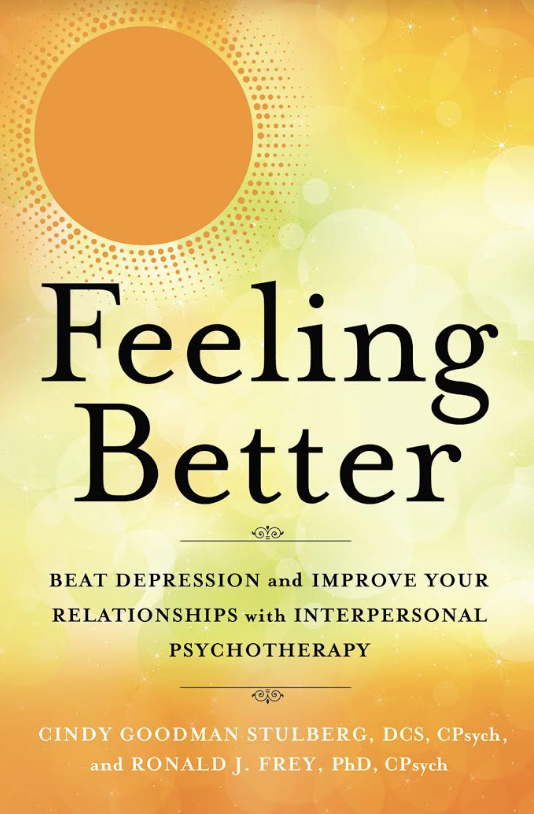Every one of us has a need to feel loved, cared for, and connected to others, but there isn’t a single person on earth who wakes up every day feeling happy — not even Oprah. Life isn’t a chick flick, where the girl always gets the guy and everyone lives happily ever after. In real life, we experience triumph and also defeat, joy and also sorrow, delight and also disappointment. If we never felt sad, how would we know how great happiness feels?
It’s important to have realistic expectations of our feelings and mood. Sometimes we’ll feel grouchy. Sometimes we’ll feel angry. Sometimes we’ll feel unloved. And sometimes we’ll feel capable, proud, satisfied, and appreciated. When we’re feeling down and depressed, it’s easy to focus on the feelings we consider “bad,” creating a spiral of negativity that makes it harder for us to recognize the moments when we feel better.
Feelings, in themselves, aren’t good or bad, positive or negative. Don’t judge yourself harshly because you have a moment of insecurity, anxiousness, or displeasure. It’s okay to feel hurt, sad, and angry. Feeling low and blue sometimes is normal. We just need to make sure we have effective tools in place to help lift our spirits when the inevitable down times happen.
It might help to think of life as an ever-changing river. Sometimes the water flows gently, sometimes
it goes over the rapids, and occasionally there’s a waterfall. From a distance, that waterfall can look beautiful — there’s even a rainbow. But when you’re going over the edge, all you feel is fear for the future and longing for the times when the river was calm and predictable. Most parts of the river of life are normal. What we need to learn is to go with the flow.
Understanding Anger
Remember when I said feelings aren’t good or bad? That’s hard for many of us to believe when it comes to anger. We see the destructive, wild, and potentially violent side of the emotion and don’t see its helpful side.
When anger is constructively expressed, it allows us to stand up for ourselves, assert our needs, and release tension. But many of us — particularly women — would rather accommodate others than ask for what we need, if it requires raising our voices or being direct. We don’t want to risk fanning the flames of conflict, feeling out of control, or driving other people away.
Keeping the peace by avoiding and denying anger isn’t healthy. We are feeling it. It will come out. And when it does, it can be ugly. We might direct it at ourselves, explode at the person we’re mad at, take it out on innocent bystanders, or transform it into another feeling, such as self-loathing.
Kate, for example, was raised to believe that good girls don’t get angry. She prefers to put her daily irritations, disappointments, and frustrations away in their respective boxes in her anger closet and close the door. She avoids the inevitable conflict between teachers at her school whenever possible and plays peacemaker when conflict lands on her desk — a role she performs well, having practiced the art of diffusing, redirecting, and hiding angry feelings all her life. She’s having a hard time keeping the door of the anger closet closed when it comes to Don, though, and it’s making her feel like a failure.
On the opposite end of the spectrum are those of us who are always angry. It’s our go-to feeling. We rage. We blame. We stew. We slam doors. We yell. We may even break things. We go from zero to a hundred in a millisecond, muttering under our breath or screaming long before we’ve even figured out what’s bothering us.
Ask John what he feels about the people in his life, and the anger surfaces immediately. He’s bitter about his parents. He’s disgusted by his siblings (except his brother, Tom, who simply disappoints him). His coworkers, particularly Alex, are at best irritating and at worst infuriating. There is open conflict in every one of his relationships.
Angry people do experience other feelings — they just don’t recognize them. These other feelings may be painful to think about or may make them sad. So they skip right over them and get mad. If they can uncover the unexpressed feeling — which is actually an indication of an unmet need — they can handle things more constructively.
Acknowledging emotions other than anger would be going against years of conditioning and decades of practice for John. If he’s honest with himself, though, John feels sad and lonely a lot of the time. He wishes people were kinder to him. He feels he’s a nice guy. Why don’t people see it? John’s anger is like a protective shield. He feels he has to stand up for himself, because no one else will.
If you’re an anger-first person like John, ask yourself, “What else am I feeling besides anger?” “What do I really want?” “What am I missing?” Maybe you’re angry because you feel someone isn’t listening to you, or because you feel excluded by your friends, or because you feel misunderstood by your boss. What you’re missing is feeling validated and respected. What you want is to be included and acknowledged. You’re feeling sadness as well as anger. Recognizing that will help you cope.

Excerpted from the book Feeling Better. Copyright ©2018 by Cindy Goodman Stulberg and Ronald J. Frey. Printed with permission from New World Library



